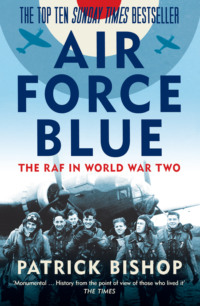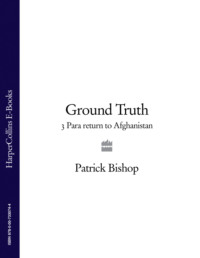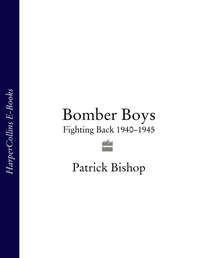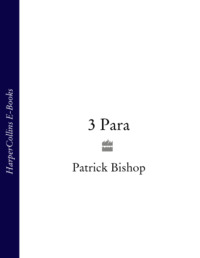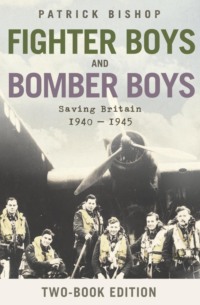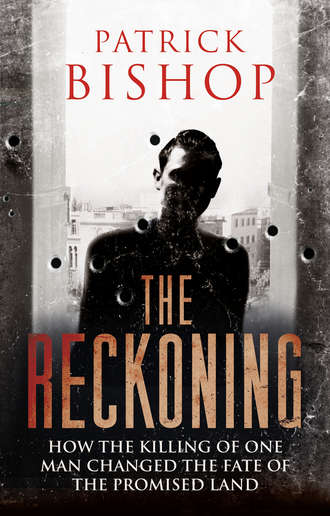
Полная версия
The Reckoning: How the Killing of One Man Changed the Fate of the Promised Land
For the Arabs of Palestine, rooted in the stasis of centuries, the rush of change was shocking and then threatening. Anti-Jewish riots broke out in Jerusalem in 1920 and the port city of Jaffa in 1921. They were stoked by a sandy-haired, lisping rabble-rouser, Haj Amin al-Husseini, the Grand Mufti of Jerusalem, and, by virtue of his office, the leading Muslim legal authority. The Mandate’s rulers remained serene. They were used to this sort of thing. Then in August 1929 came an explosion of violence that could not be ignored. In a week of murder, rape and arson 133 Jews lost their lives. In suppressing the pogrom, 116 Arabs were killed. British complacency evaporated.
London dispatched a commission to investigate, the first of many that would wrestle with the Palestine problem. Essentially, it addressed Arab grievances and recommended reining in Jewish immigration and restricting land purchases. It was a vain proposal. Not only would it prove unworkable. The British had revealed that their commitment to the Balfour Declaration was faltering and from now on Jewish suspicions and disillusionment would grow.
In the meantime, though, it was the Arabs who were causing the trouble. MacMichael would be taking over in the middle of a full-blooded uprising. Hitler’s rise to power in Germany had triggered a new Jewish exodus. In 1935 more than 60,000 Jews arrived in the country, and more were trickling in illegally. There were now about 430,000 in Palestine – roughly a third of the total population.3 It only needed a spark to ignite Arab anger and that came in April 1936 when the murder of two Arabs by Jewish extremists in retaliation for the murder of two Jews sent violence rippling through the country.
Arab bands, reinforced by mercenaries and sympathizers from Syria and Iraq, attacked Jews, policemen and soldiers. They felled telegraph poles, ambushed cars and blew up railway lines and the oil pipeline that ran through Palestinian territory on its way from Mesopotamia to Haifa. A general strike lasted for six months. The rebellion was coordinated by the Arab Higher Committee, a collection of notables dominated by the Mufti. Their demands were simple: an end to Jewish immigration and land sales and a representative council that would pave the way for an independent Arab state.
London responded with another commission, led by Lord Peel. It arrived in October 1936 and there was a lull while it went about its work. Its report was published in July 1937 and came up with a drastic but inevitable-seeming solution – the partition of Palestine into an Arab and a Jewish state. The Jews gave qualified backing to the plan. The Arabs rejected it outright and now, as the security arrangements for MacMichael’s onward journey to Jerusalem made plain, the revolt was back in full swing.
Just before ten o’clock the High Commissioner’s party boarded a special train. The authorities were expecting trouble. As the engine steamed slowly away from the harbour, it was preceded by a flatbed trolley, mounted with a machine gun manned by soldiers of the Royal Scots Fusiliers. Others stood guard at regular intervals along the track. For the first few miles three Royal Air Force aircraft weaved in formation overhead.
No matter how fiercely the rebellion burned, it was clear that the Jews were in Palestine to stay. As the special train passed Tel Aviv and clattered onto the spur line that climbed up to Jerusalem, it came within sight of the settlement of Rehovot. It was the home of the scientific research centre run by Dr Chaim Weizmann, the Russian-born Manchester University chemistry lecturer who was Zionism’s most effective lobbyist in Britain and the president of the World Zionist Organization. A few days earlier he had been visited by ‘William Hickey’ of the Daily Express – the pseudonym of the influential boulevardier Tom Driberg. The journalist had been impressed by the ‘sun-bathed orange groves, orchards, Riviera-like gardens, the white-walled Institute where seventy scientists from many countries are working, the garden city beyond …’4 In the subsequent piece, Weizmann had delivered his judgement on the partition plan. He was prepared to accept it ‘on the “half a loaf” principle’ and believed that ‘with slight improvements, most Jews’ would do the same.
Even so, he made it clear that the territory allotted to the Jews was not nearly big enough to absorb Europe’s persecuted masses. ‘No territory you could produce would hold them,’ he said. ‘There are five or six million of them – in Germany, Hungary, Romania, Poland. You can’t fight a tidal wave. All we can do is salvage the children. Concentrating on young Jews, I anticipate bringing one and a half million of them into Palestine in the next twenty years.’
When Driberg suggested that this was fanciful, Weizmann retorted: ‘It may be sentiment but we have converted the sentiment into dynamic power.’ It was the English, he said, who were sentimental – ‘sentimental about the Arabs. They admire picturesque inefficiency. It is the tourist attitude. We may be spoiling the landscape but five years ago all this was bare desert.’ Driberg was convinced. ‘It is this spectacular success of the Zionist colonisation,’ he concluded, ‘that has made the clash acute. The Arabs are in retreat from the land.’
It was true that many British officials had a soft spot for the Arabs, a combination of affection shot through with condescension. Before taking the job, MacMichael had sought the counsel of Sir Robert Brooke-Popham, until recently commander of the Royal Air Force in the Middle East. He had given freely of his advice. ‘One sees the Arab seated under a tree and playing on his pipes to encourage his sheep and goats to graze,’ he mused.5 ‘One goes down to Tel Aviv and one sees all the bustle and blatancy of a mushroom-like town. From the purely economic point of view, far more wealth is being produced and circulated in Tel Aviv than by any number of Arabs playing to their goats. But one may be permitted to wonder which method really does more ultimate good in the world, and I fancy the Arab is feeling the same sort of thing.’
His paternalistic sympathy was matched with a Victorian belief that to spare the rod was to spoil the child. ‘As of course you know, what the Arab appreciates is swift punishment,’ he wrote. ‘Any delay he regards as weakness.’
MacMichael did know. His high, donnish forehead, receding chin and quiet manner disguised an outlook that was as hard and sharp as flint. Familiarity with colourful, oriental cultures did not incline him to leniency towards colourful, oriental rebels. He had a strict sense of racial hierarchy with the Sudanese of the Upper Nile who lived in a state of ‘semi-simian savagery’ at the bottom and the British at the top. MacMichael, wrote a historian of the Anglo-Egyptian Sudan, combined ‘great intelligence, extensive study and experience [and] a commanding ability in debate’ with ‘a rigidity of standards, and a public presence of icy reserve’.6 He brought to every problem ‘logic, orderliness, orthodoxy’ and a keen awareness of protocol. The daytime temperature in Khartoum averaged 99 degrees Fahrenheit, yet he insisted on his officials being properly attired in jackets and ties when dealing with natives, for ‘any informality of dress and manner … might be resented and undermine authority’.
MacMichael’s orthodoxy was one of the main reasons he had been chosen for the Palestine job. With the Arab revolt showing no signs of abating, London needed a man who could be relied on to follow instructions and take hard measures. That had not been the style of his predecessor. Wauchope was unpopular with his officials, the military and ultimately his chiefs back in London, whose belief that he was too soft on the rebels had hastened the decision to retire him.
As Ormsby-Gore made clear in his welcoming letter, there could be no question of backing down in the face of force. ‘We have to remain in Palestine for strategic reasons and for reasons of political prestige,’ he declared. He did not hide from MacMichael his opinion of Wauchope’s administration, which had been ‘weak and poor to say the least of it’. The situation required ‘firm’ as well as ‘wise’ handling.
A tougher strategy against the rebels was already evident. During Wauchope’s absence on sick leave his Chief Secretary, a genial, indiscreet but above all efficient Cornishman called William Battershill, moved to impose some grip. The government approved his request for a crackdown and on 1 October 1937 those members of the Higher Committee who had not already fled were rounded up, put on a British warship in Haifa and deported to the Seychelles. The Mufti, who Battershill discovered on first greeting him ‘had a hand like a piece of damp putty’,7 took refuge in Jerusalem inside the Haram al-Sharif. The compound enclosed the Dome of the Rock, the shrine that marks the spot from where Mohammad made his night journey to heaven on the white steed Buraq and a place so bristling with religious sensitivities that it was a no-go area for British hobnailed boots. From there he soon escaped, disguised as a woman by some accounts, and made his way to French-controlled Lebanon, to carry on agitating.
Martial law was imposed and henceforth rebels were tried by military courts which could impose death sentences for the mere possession of a firearm. The Palestine garrison had been steadily reinforced since the troubles and was now 20,000-strong.
The most important element in the struggle against unrest was not the army but the police. The Palestine Police Force (PPF) was set up in 1920 with a core of British officers controlling a much larger native force of Arabs and a smaller number of Jews. It had failed to prevent, and struggled to contain, the persistent outbreaks of violence. Late in 1937 two colonial police veterans, Charles Tegart and David Petrie, were brought in to devise a strategy against the revolt and to carry out reforms.
Their most dramatic proposals were to build a network of reinforced concrete forts at key points around Palestine and a barbed-wire barrier along its northern and eastern frontiers to stem the flow of arms, fighters and supplies from Lebanon, Syria and Iraq. They also called for the strengthening of the Criminal Investigation Department. It was clear that the police would continue to play the lead role in gathering information about political subversion in Palestine. They, after all, lived in the place and were kept up to date on the moods and machinations of the Arab and Jewish communities via their local employees. The RAF had a permanent presence in the country and air force intelligence officers made some contribution to the information picture. The army units, though, came and went, and military intelligence resources had anyway been drastically run down after the war. On the recommendations of Tegart and Petrie, the CID would be transformed into a vigorous, systematic and efficient service aimed at penetrating the workings of the multiple organizations – Jewish and Arab – that threatened to undermine the rule of the Mandate.
The authority of the British was being challenged everywhere. It was essential to demonstrate confidence and resolve and remind the local populations where the balance of power lay. As MacMichael’s train laboured up the switchback track that led through the stony slopes of the Jerusalem hills, three RAF aircraft appeared overhead once more, swooping and wheeling through the thunderclouds glowering over the Holy City. By the time it pulled into Jerusalem station at 2 p.m., the heavens had opened and when the band of the Black Watch had played a few bars of the national anthem Sir Harold and his party were whisked off to Government House.
There, in the ballroom, 200 guests were waiting. Sir Harold’s finery was matched by the costumes of many of the assembly. Soldiers, policemen and airmen were in full dress uniform. Prince Naif, son of King Abdullah, Emir of the British protectorate of Transjordan, wore Bedouin costume. The Palestine Post’s reporter declared that it was the assembled patriarchs, priests and rabbis who ‘presented the most striking picture, rivalled only by the Moslem religious dignitaries in their red tarbushes, white turbans and black capes’.8
They stood as Sir Harold signed the royal commission of appointment and Chief Justice Trusted, wearing full-bottomed wig and purple cape, gave his welcoming speech. According to the Post, it was ‘very brief and delivered with deliberation and emphasis’. After paying tribute to each of Sir Harold’s four predecessors in Palestine, he concluded with an observation with which the new High Commissioner was by now all too depressingly familiar: ‘Many major problems await your excellency’s consideration,’ he rumbled, ‘and we cannot doubt that you are faced with an arduous task.’
Sir Harold’s reply was short and frank. He was not going to make a speech as he had only been in Jerusalem for half an hour and was starting work in a country of which he knew ‘practically nothing’. That night, in a twelve-minute broadcast to the people he now governed, he again protested his ignorance, saying he was ‘sure of little but the incompleteness of my own knowledge of conditions and personalities’. He nonetheless laid down the principles on which he would govern. The first was ‘the duty to maintain the authority of His Britannic Majesty and the firm establishment of law and order’.
This uncompromising message was softened by a declaration of his good intentions to all. ‘The motives that will actuate me will be simple ones of good faith and honest endeavour to do what is best for all concerned with firmness and impartiality,’ he said. ‘Nor does impartiality present difficulties for me, for the problem is not one upon which I have any preconceived ideas or bias.’9
It was not impartiality, though, that the Arabs and Jews wanted from the British. As MacMichael would soon learn, each side would be clamouring for his undivided support. After delivery, the speech was re-broadcast in Arabic and Hebrew. There was nothing much in it to indicate to the listeners that this cold, efficient man held the key to the Palestine conundrum. Looking back over the day, the Palestine Post was reduced to taking comfort in superstition. ‘There were three good omens in connection with His Excellency’s arrival in Haifa,’ it reported on its front page. ‘A rainbow was seen over the Bay of Acre as the Enterprise drew near the harbour. As Sir Harold entered the transit shed, a dove flew the length of the building. An old Arab proverb welcoming an honoured guest says “when you came, the rain came”.’10
* My name is George Nathaniel Curzon/I am a most superior person/My cheeks are pink, my hair is sleek/I dine at Blenheim twice a week.
TWO
‘This Was the Job for Me’
The rainbow that arced over Haifa that day would have been visible to Geoffrey Morton as he went about his duties controlling the city’s traffic during Sir Harold’s arrival and departure. He was not the sort of man to believe in omens. Life was good. He was thirty years old, fit, happy and second in command of the Haifa urban district. His service record was crammed with seventeen commendations and in the 1937 New Year’s Honours’ List he became the first recipient of the new Colonial Police Medal in recognition of ‘distinguished and valuable services’. He had got where he was not through luck but by hard work and determination.
Haifa was a good posting, the most attractive city in Palestine. It faced onto the Mediterranean which sparkled like a sheet of sapphires in the bright daylight and glowed like molten gold in the setting sun. To outsiders it seemed blessedly civilized, a relief after Tel Aviv’s perpetual building works and Jerusalem’s unedifying religious rivalries, which were enough to put some of the devout among the Mandate’s rulers off God for ever. When the Arab revolt erupted, though, Haifa had felt the shock waves.
Morton was there for the start of the trouble. One morning in May 1936 he was dispatched to deal with a crowd of Arabs who were gathering in the souk. They waved knives and sticks and shouted anti-Jewish and anti-British slogans and were soon surging through the streets towards the District Commissioner’s offices in the middle of town.
When the main body was blocked by a police cordon, a breakaway band of troublemakers regrouped on Kingsway, one of Haifa’s main streets, and began stoning Jewish cars. Morton was one of the small squad sent to deal with them. He was wearing a steel helmet – standard riot issue. As he stood in the lee of a building discussing the situation with a fellow officer, someone dropped a coping stone from three storeys up, which caught him square on the head.
He was knocked unconscious but when he came round he carried on with his duties. The requested reinforcements did not materialize. The mob was getting ever more threatening. The senior officer present, Inspector G. F. ‘Dinger’ Ring, decided it was time for action. The Palestine Police had a detailed drill for dealing with mobs. Ring yelled out a proclamation in Arabic, calling on the rioters to go home or face the consequences. The Arabs responded with a shower of missiles. He now ordered the designated marksman in the party, Sergeant ‘Nobby’ Clarke, to move to the next step. He ‘went through the rifle drill as calmly and efficiently as if we were giving on the parade ground a demonstration of our humane methods to a delegation from the League of Nations,’ Morton recalled.1
First Clarke held a cartridge aloft to leave the crowd in no doubt of what was coming and give them time to do the sensible thing. The gesture had no effect. He loaded the round into the breech and thrust the bolt home. There was another pause, then Ring gave the order to take aim – but to wound, not to kill. ‘Slowly and deliberately’ Clarke drew a bead on the knees of the mob’s ringleader. Morton saw several stones and sticks hit the sergeant’s body ‘but he stood there, steady as a rock, resisting the irresistible instinct to flinch and duck’. Morton speculated later that perhaps a missile had spoiled Clarke’s aim or the victim had been stooping to pick up a stone when he was hit. Whatever the reason, an instant after the order to fire, the ringleader ‘lay, 20 yards away in front of the mob, stone dead, with a neat, round hole between the eyes’. The gunshot was followed by ‘a split second of petrified silence and then by the vague sounds of myriad feet running for dear life’. Moments later ‘there was not a soul to be seen, and that particular riot was over’.
In later life Morton recounted this incident – and many more like it – with relish. He liked the smell of danger. He welcomed the psychological challenge inherent in every confrontation between the forces of law and order and the mob. Inevitably the police were outnumbered and, though armed, would be overwhelmed if the rioters went on the rampage. By keeping their nerve, though, and reading the mood of the crowd, good policemen should be able to impose their will on far superior forces. Service in the Palestine Police would give him many opportunities for matching his will and skills against the enemies of British rule.
Like many in the force, he had arrived there almost by chance. Geoffrey Morton was the second son of William Jackson Morton, a lively character who seemed to embody the vigour, public-mindedness and optimism of early twentieth-century Britain. He was the manager of a busy branch of United Dairies, whose horse-drawn carts supplied London housewives with their daily milk and butter. The premises were in Urlwin Street, Lambeth, south London, next to the yellow-brick arches of a railway viaduct that carried commuters and shoppers back and forth between Blackfriars Station a mile or so away on the north bank of the River Thames and the south-east suburbs of London. Mr Morton lived a few dozen yards from his place of work with his wife, Sarah, two sons and daughter and a maid in a large nine-room terraced house. Their home was a middle-class outpost in a boisterously working-class area. It faced onto Camberwell Road, a wide, traffic-ridden street that during the day was lined with barrows selling fruit and vegetables manned by coarse, chatty costermongers. The many pubs, music halls and cinemas ensured that the area was equally lively at night.
At first sight, William Morton appeared a man of monumental respectability. He attended the local Anglican church on Sundays and was an enthusiastic Freemason. For thirty years he sat as a Conservative member on the London County Council, the powerful municipal body that ran many of the capital’s services, and, as a lay magistrate, dispensed justice to the drunks and delinquents of the borough. When the war came in 1914, he was forty-three, too old for the colours. He signed up instead as a special policeman, rising to command the auxiliaries in Lambeth and neighbouring Southwark. On his death in 1940, the local newspaper described him as ‘one of the best-known figures in South London’.2
Behind the austere frontage of conformity, though, there gleamed a sense of fun. Edward VII was on the throne when Geoffrey was born and William Morton shared his sovereign’s enjoyment of card games and long, smoke-filled evenings. Like the monarch, he did not allow his wife’s strict sense of rectitude to interfere with his own enjoyable routines of meeting friends and visiting music halls.
Later in his own life Geoffrey Morton would give an exhaustive account of his professional career. He said very little about his boyhood and adolescence – as if it had no bearing on who he was or what he became. He left nothing on record concerning his brother, Arnold, four years his senior and a ‘black sheep’ who disappeared early from the family story. Much more is recorded about his younger sister, Marion, an ambitious, spirited girl who went on to become a teacher and an international standard netball player.
He started at his first proper school aged eight in January 1916. Every morning he set off from Camberwell Road on the two-mile journey to St Olave’s Grammar School, an impressive red-brick building, adorned with stone bas-reliefs of philosophers and poets, which sat on the south bank of the Thames next to Tower Bridge. ‘Stogs’, as it was known to generations of pupils, was founded in 1571 to provide free education to boys from modest homes. The curriculum in 1916 included scripture, Latin, Greek, French, German, Spanish, English grammar and literature, history, geography, arithmetic, algebra, geometry, trigonometry, chemistry, physics and botany. Great store was set on the values of the rugby field and the cricket pitch. Olavians filled the ranks of the professions. They were lawyers and bankers, accountants and teachers and doctors. They also served the empire as soldiers, sailors and administrators.
The list of distinguished Old Boys was long. It seemed unlikely that Geoffrey Morton would ever be among them. ‘He has been somewhat disappointing,’ recorded his form master, Mr Midgley, when Geoffrey had been at the school barely six months. ‘His work has shown ability but he is not consistently keen.’3
The school’s ethos was Victorian and Edwardian – forward looking, but intensely patriotic and nostalgic for an imagined chivalric past. Its solid brick walls could not shield it from the very modern war being fought across the Channel. Stogs men were floundering in the khaki mud of Picardy, and dying at the same rate as everyone else. In Geoffrey’s first year, the school magazine was full of death notices and unsparing accounts of the fighting. ‘In the Royal Army Medical Corps we see the most terrible side of war,’ wrote an Old Boy, Leslie Hocking.4 ‘We see strong men pass us on their way up the trenches and a few hours later it is our duty to fetch some back as terribly disfigured and mangled corpses.’ Hocking was killed before his account appeared.
The conflict was on the doorstep. Britons could no longer rely on the surrounding seas to insulate them from violence when the country went to war. In the summer of 1915 Zeppelin airships started to drop bombs on London. In 1917, a raid demolished homes in Albany Road, a few hundred yards away from the Mortons’ house, killing ten and injuring twenty-four.
Occasionally, Geoffrey responded to his teachers’ urgings to try harder. The rallies were brief. Now and again he shone at French and German. His best subject was English grammar. In everything else he was towards the bottom of the class. He was particularly weak at scripture. William Morton’s conventional piety had failed to rub off on his son and Geoffrey’s indifference to God would persist all his life.




